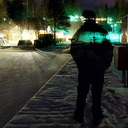0 Likes
http://www.antinori.it/eng/tenute_in_italia/tenute_in_italia.php?tit=lemortelle&logo=lemortelle The farm is located in the heart of the lower Maremma, in the province of Grosseto, approximately 9 km from Castiglione della Pescaia. It spreads out across 270 hectares, of which 160 are planted with grape vines. There are also 15 hectares of orchards (peaches, plums, apricots, pears, and blueberries), cultivated with organic farming methods, and two artificial lakes, the largest of which has an expanse of approximately 6 hectares. It is surrounded by low hills covered with olive trees and woods. The 160 hectares of vineyards are planted primarily with cabernet sauvignon and sangiovese, along with more recent cultivations of white varietals such as vermentino, ansonica, and viognier. The soil is a medium-textured sandy loam, has a mainly siliceous-clayey composition, and is, at least in certain areas, rich in rocks. The new wine cellar of Le Mortelle is located at the top of the small hill which overlooks the estate. Its construction required the demolition of existing industrial buildings, with the exception of the farmhouse “Leopoldina”, dating back to the early 1900’s. This historic farmhouse is now being renovated to house a factory outlet. Most of the wine cellar is underground, with the aim of having as little impact as possible on the environment. It was built using natural materials, taking advantage of the thermoregulation provided by rocks located deep under the earth’s surface. The underground structure, built in a cylindrical shape, was designed using three levels: all of the various phases of wine production take place within this structure: from receiving the grapes to vinification; to storage and ageing of the wines in barriques in the basement level. This particular architectural design allows for the leveraging of the best and latest technologies for wine production: the production of the wine actually takes place “by falling”, following a route descending from the top towards the bottom, beginning with the arrival of the grapes at the upper level, and then continuing with the vinification process on the middle level, and subsequently with ageing underground, leading to the departure of the finished product. Amongst the elements which distinguish this wine cellar are the lighting, dispensed through lateral openings and one at the top in the center, next to a helical winding staircase which connects all of the levels, both visually and functionally. The wine cellar’s ceiling is made of a laminated wood and steel structure that, on the outside, blends in with the green hilltop. This structure not only allows the production cycle to be carried out using a system of “falling”, which helps quality control, but above all, it contributes to significant energy savings. The water used in the winery during various processes is routed back into the environment using a natural cycle of phytoremediation, and the energy which has to be acquired only comes from renewable sources of production.
...





The Tuscany, one of the most beautiful Italian regions, is known throughout the world for its Landscapes and for the Works of Art that it houses (It is the birthplace of the Italian Renaissance). Six localities have been designated World Heritage Sites: the Historical Center of Florence, Siena, San Gimignano and Pienza, the Square of the Cathedral of Pisa with the Leaning Tower and the Val d'Orcia. It is in the central Italy and borders with Emilia Romagna (north), Marche and Umbria (east) and Lazio (South). The West coast is bathed from the Ligurian and Tyrrhenian Sea; here we can find the islands of the Tuscan archipelago including the island of Elba. The regional capital is Florence and the other provinces are: Arezzo, Grosseto, Livorno, Lucca, Massa, Pisa, Pistoia, Prato and Siena.